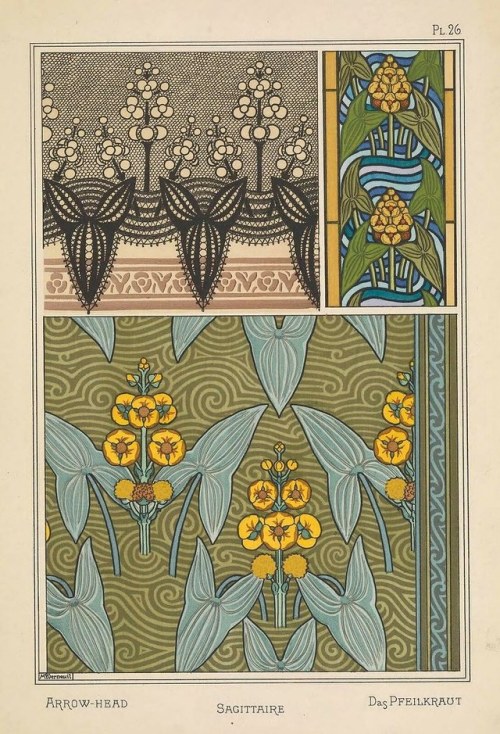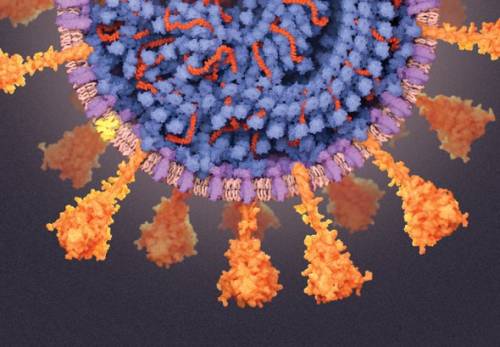As Marcas Do Tempo Contemplam O Amor.
As marcas do tempo Contemplam O amor.

More Posts from Ritasakano and Others





Eugène Grasset, Plants and Their Application to Ornament, 1896
Archive.org and Gallica.bnf.f


The maiko Ichimari with the sakkou hairstyle and a focus on her own designed kanzashi made with turtle for hapiness and a crane and some pines for longevity! (Source1, Source2)
É Natal
Vamos cantar
Alegria
Em nossos
Corações!!!






A Visual Guide to the SARS-CoV-2 Coronavirus
Illustrations by Veronica Falconieri Hays (Scientific American)
What scientists know about the inner workings of the pathogen that has infected the world
For all the mysteries that remain about the novel coronavirus and the COVID-19 disease it causes, scientists have generated an incredible amount of fine-grained knowledge in a surprisingly short time.
Thousands of different coronaviruses may inhabit the planet. Four of them are responsible for many of our common colds. Two others have already triggered alarming outbreaks of disease: in 2002 a coronavirus caused severe acute respiratory syndrome (SARS), which killed more than 770 people worldwide, and in 2012 a different strain started Middle East respiratory syndrome (MERS), taking more than 800 lives. SARS burned out within a year; MERS still lingers.
The newest coronavirus, SARS-CoV-2, has created a far deadlier pandemic in part because once it infects a person it can lie undetected for a long time. An individual who had the SARS coronavirus did not transmit it until 24 to 36 hours after displaying symptoms such as fever and dry cough; people feeling ill could be isolated before they made others sick. But people with COVID-19 can transmit the virus before they show clear symptoms. Not feeling ill, infected men and women work, commute, shop, eat out and attend parties, all the while exhaling coronavirus into the airspace of people around them. The virus can remain undetected inside the human body for so long partly because its genome produces proteins that delay our immune system from sounding an alarm. Meanwhile lung cells die as the virus secretly reproduces. When the immune system does hear the call, it can go into overdrive, suffocating the very cells it is trying to save.
In the graphics that follow, Scientific American presents detailed explanations, current as of mid-June, into how SARS-CoV-2 sneaks inside human cells, makes copies of itself and bursts out to infiltrate many more cells, widening infection. It shows how the immune system would normally attempt to neutralize virus particles and how CoV-2 can block that effort. It explain some of the virus’s surprising abilities, such as its capacity to proofread new virus copies as they are being made to prevent mutations that could destroy them. And it shows how drugs and vaccines might still be able to overcome the intruders.

Virus invasion and immune response
A SARS-CoV-2 particle enters a person’s nose or mouth and floats in the airway until it brushes against a lung cell that has an ACE2 receptor on the surface. The virus binds to that cell, slips inside and uses the cell’s machinery to help make copies of itself. They break out, leaving the cell for dead, and penetrate other cells. Infected cells send out alarms to the immune system to try to neutralize or destroy the pathogens, but the viruses can prevent or intercept the signals, buying time to replicate widely before a person shows symptoms.





Drug and vaccine intervention
Commercial and university labs are investigating well over 100 drugs to fight COVID-19, the disease the SARS-CoV-2 virus causes. Most drugs would not destroy the virus directly but would interfere with it enough to allow the body’s immune system to clear the infection. Antiviral drugs generally stop a virus from attaching to a lung cell, prevent a virus from reproducing if it does invade a cell, or dampen an overreaction by the immune system, which can cause severe symptoms in infected people. Vaccines prepare the immune system to quickly and effectively fight a future infection.


The remarkable and mysterious Coronavirus genome
The SARS-CoV-2 genome is a strand of RNA that is about 29,900 bases long—near the limit for RNA viruses. Influenza has about 13,500 bases, and the rhinoviruses that cause common colds have about 8,000. (A base is a pair of compounds that are the building blocks of RNA and DNA.) Because the genome is so large, many mutations could occur during replication that would cripple the virus, but SARS-CoV-2 can proofread and correct copies. This quality control is common in human cells and in DNA viruses but highly unusual in RNA viruses. The long genome also has accessory genes, not fully understood, some of which may help it fend off our immune system.

This article was originally published with the title “Inside the Coronavirus” in Scientific American 323, 1, 32-37 (July 2020). doi:10.1038/scientificamerican0720-32
Source: By Mark Fischetti, Veronica Falconieri Hays, Britt Glaunsinger, Jen Christiansen | Scientific American July 2020 Issue

Quando o falar não se faz necessário
Quando o olhar completa as palavras
Quando o toque confessa
Tudo o que somos
Rita Sakano
-
 hectorfranciscozaragozagarcia liked this · 7 years ago
hectorfranciscozaragozagarcia liked this · 7 years ago -
 sanctuarysin liked this · 8 years ago
sanctuarysin liked this · 8 years ago -
 morsashouse liked this · 8 years ago
morsashouse liked this · 8 years ago -
 in-the-meantime-my-darling liked this · 8 years ago
in-the-meantime-my-darling liked this · 8 years ago -
 captainbogart13 liked this · 8 years ago
captainbogart13 liked this · 8 years ago -
 rideumhard reblogged this · 8 years ago
rideumhard reblogged this · 8 years ago -
 rideumhard liked this · 8 years ago
rideumhard liked this · 8 years ago -
 samsi6 liked this · 8 years ago
samsi6 liked this · 8 years ago -
 lovesheila13-blog reblogged this · 8 years ago
lovesheila13-blog reblogged this · 8 years ago -
 stickeeclean reblogged this · 8 years ago
stickeeclean reblogged this · 8 years ago -
 torteo liked this · 8 years ago
torteo liked this · 8 years ago -
 esamnoor liked this · 8 years ago
esamnoor liked this · 8 years ago -
 mrminty liked this · 8 years ago
mrminty liked this · 8 years ago -
 charlesdclimer liked this · 8 years ago
charlesdclimer liked this · 8 years ago -
 gnostix1 liked this · 8 years ago
gnostix1 liked this · 8 years ago -
 schreibland liked this · 8 years ago
schreibland liked this · 8 years ago -
 sumpfdotterblume liked this · 8 years ago
sumpfdotterblume liked this · 8 years ago -
 oldman2014 liked this · 8 years ago
oldman2014 liked this · 8 years ago -
 ritasakano reblogged this · 8 years ago
ritasakano reblogged this · 8 years ago -
 ritasakano liked this · 8 years ago
ritasakano liked this · 8 years ago -
 kakashiswife1 liked this · 8 years ago
kakashiswife1 liked this · 8 years ago -
 justtoomuchstuff liked this · 8 years ago
justtoomuchstuff liked this · 8 years ago -
 lostintheozoneagain2 liked this · 8 years ago
lostintheozoneagain2 liked this · 8 years ago -
 pictureheaven liked this · 8 years ago
pictureheaven liked this · 8 years ago -
 simolegheg75 liked this · 8 years ago
simolegheg75 liked this · 8 years ago -
 baltazar-home liked this · 8 years ago
baltazar-home liked this · 8 years ago -
 moonstar-magic liked this · 8 years ago
moonstar-magic liked this · 8 years ago -
 kenzotrufi reblogged this · 8 years ago
kenzotrufi reblogged this · 8 years ago